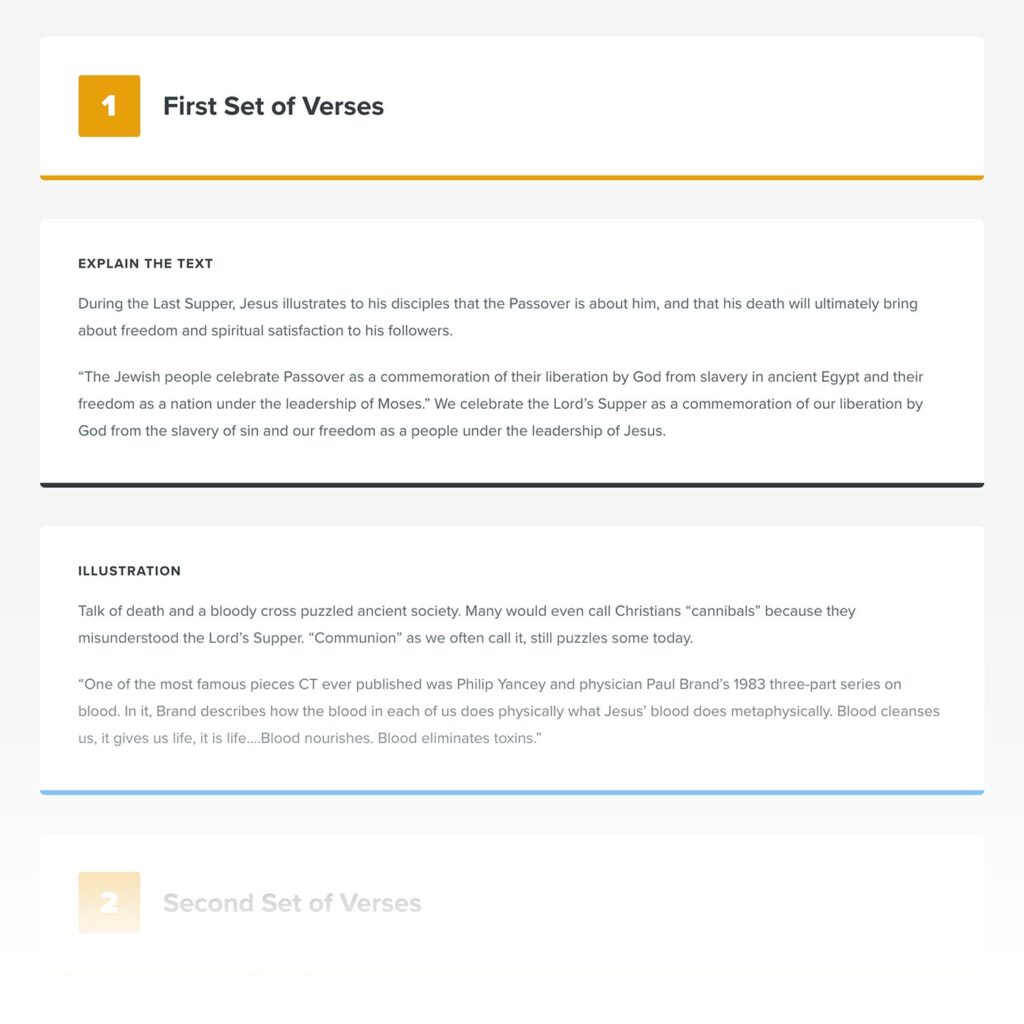Verse-by-Verse Running Commentary Outline
(Also known as an Expository or Textual Sermon)
This template is designed to help pastors work verse-by-verse through their text. Included are blocks for illustrations and application.
Have you ever heard a message that forever changed the way you viewed a certain passage of Scripture? Or, have you ever walked away from a sermon thinking, “Wow, I understand what the Bible is saying so much more clearly now!” If so, chances are you were listening to what we call a “Verse-by-Verse Running Commentary,” sometimes called an expository or textual sermon.
The running commentary format is an amazing way to explore a passage in depth. Preaching in this style allows you to delve into the Biblical context, history, culture, and difficult-to-discern meanings found within your text. It’s an amazing way to bring the Bible to life for your congregation, but it comes with a huge caveat: If not done well, a running commentary can be more confusing than helpful. That’s why it’s crucial to understand how to preach effectively in the expository style.
Follow these steps to construct your sermon outline:
- Start by reading your text. What’s the main idea portrayed in the verses you’ll be covering? Make a note of it—this is the main idea of your sermon.
- As you introduce the topic, don’t only seek to grab your audience’s attention, but make sure you cover why these Biblical truths matter for our lives today. In essence, pique their interest and explain why they should keep listening.
- Before you read the text, explain background and context. If you’re preaching from the middle of a story, give them a summary on what’s already happened or is about to happen. If you’re not preaching from a story, talk about the culture and time period where this passage was written or what had or was about to happen in history or in the human author’s life.
- Congrats! You’ve finished your introduction. Now, you’ll read the first set of verses that forms a thought and use them to craft your first point. As you teach, start by explaining what the text means, using more background and/or referring back to the Hebrew or Greek. Then, illustrate this meaning by painting a picture of what it looks like to live this out.
- Next, move on to the second set of verses and do the same thing: explain it, then illustrate it.
- Finally, give the same treatment to your third set of verses!
- Now it’s time to give your congregation a takeaway for this passage. To craft this portion, ask and answer the questions “How should we act, based on this passage?” or “As a result of what we’ve just learned, what should we do differently?”
- As you conclude, give a summary of what you’ve taught, then reiterate what actions need to be taken, now that we’ve heard the word of God.
Now that you see how much research and background knowledge goes into crafting a textual sermon, you might be feeling a little overwhelmed. Don’t!

See how the Verse-by-Verse Running Commentary Outline works

Don't let sermon writing hang over your head all week
We believe writing and preparing sermons should be one of the highlights of pastoral ministry rather than one of the greatest burdens. That’s why we’ve created a sermon editor used by thousands of pastors to streamline their sermon writing process, inspire ideas to help them find momentum, and help keep the joy of ministry and sermon prep.